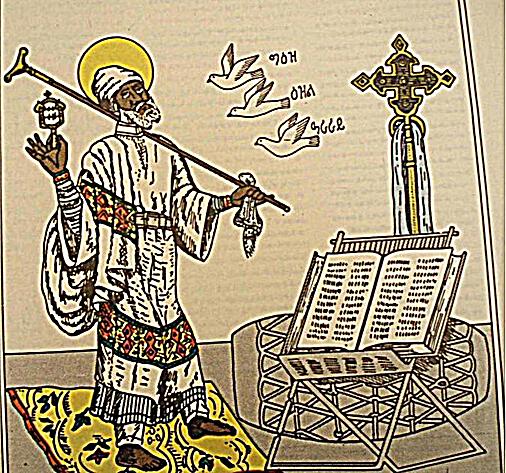
I am a womanist, feminist, post-colonial, transgressive, progressive biblical scholar. I am liberal about the love of God and conservative about translation issues (like lexical fidelity). And I have been accused of rewriting the bible on more than one occasion, see Rewriting the Bible: the Gospel According to Liberals where I’m in good company. That is something that I and the History Channel have in common. HC offers a disclaimer before each episode of its miniseries: This program is an adaptation of bible stories. It endeavors to stay true to the spirit of the book. I applaud the History Channel for their honesty here, in spite of the name of the project, “The Bible,” what they offered was an interpretation, one clearly marked by the social location – race, religion, culture and gender politics of its producers. (See the archives of this blog for many examples.) Their interpretation included a fair bit of rewriting the bible for their own purposes.
The charge is a common one regularly leveled at progressive or liberal Christians, really anyone who isn’t claiming a literal interpretation of an inerrant scripture. And that’s what makes History Channel’s Bible mini-series so interesting to me, given that it is marketed so heavily to evangelical and conservative Christians, many of whom subscribe to literalist and inerrantist readings of scripture. The series engages in rewriting the bible on an epic scale, so much so that they’re offering a novel as a follow up for all the bits they couldn’t quite work in. Mind you that’s a novel – the ultimate rewrite – rather than an extended DVD of, say, clips from actual biblical accounts that they couldn’t broadcast because of time limits.
If rewriting the bible is so awful, so progressive, so lefty, so liberal, why is a project with such good evangelical and conservative Christian street cred doing so, loudly, publicly and getting paid? (That novel, the series itself and the other Bible Series merchandise is not free.)

Because of what all seminary professors, biblical scholars, seminary trained clergy and religious leaders and careful critical readers of scripture know: we all interpret everything we read or see, including (and not just) sacred texts. Yet there is a misperception that texts – especially religious texts – are independent of interpretation, that their meaning is whatever the literal text says, with no nuance or room for interpretation. And Those who get to say that the text means what it literally says to them, are those with power, frequently white, male, heterosexual, cis-gendered, able-bodied, frequently clergy (with or without seminary education depending on the tradition).
And while all readings and viewers are interpretive and affected by the identity of the readers and viewers, that doesn’t mean that it is impossible to make historically appropriate productions of biblical or other stories. And I confess that’s what I expected from the History Channel, a retelling of the biblical narrative as it is preserved supplemented by the historical record. What I saw was a particular religious and cultural retelling that rewrote the portions of the bible that did not fit the larger vision. The final episode of the mini-series contained some truly spectacular rewrites:
The gospel accounts of Jesus’ trial make it clear that Jesus was shuffled off from Pilate to Herod and back to Pilate. The number of legally questionable proceedings and sheer exhaustion of the nighttime travels build the tension in the scriptural accounts. The mini-series cut out Herod’s hearing and the travel between locations.
Jesus’ female followers were seemingly compressed into a single “Mary” based on her appearance at the tomb, I’m guessing Magdalene. I give the History Channel credit for including her among the disciples from the very beginning, but by making a lone woman a disciple apart from the company of other women they present an unnecessarily scandalous (from a First Century Jewish cultural perspective) of this one woman running around with a group of men. They cut out Joanna, Salome, the other Mary (as the bible calls her), leaving Mary and Martha behind after the resurrection of Lazarus. (In that episode the departed from the Gospel which says that Jesus called Lazarus to come out of the tomb – from outside – by having Jesus go in and kiss him on the head.)
Jesus’s march to Calvary includes a scene with a woman wiping the face of Jesus. Many Catholic, Anglican and other Christians will recognize this as the story of St. Veronica from the Stations of the Cross. It is beloved, but not in the bible.
Easter morning did not find Mary Magdalene going to the tomb with spices to prepare the body of Jesus for a more permanent burial. (They seem to be using John’s gospel which eliminates all but one of the women from all of the other gospels.) She went with nothing for no discernible purpose.
And, on the day of Pentecost in the scripture, the disciples who were there numbered 120 made up of the surviving first 11 (after Judas’ suicide), Jesus’ mother (absent), siblings (I don’t think we ever saw his sisters in the whole series nor all 4 of his brothers), 2 candidates to replace Judas and the rest were “certain women,” meaning that with the exception of the 17 men the other 103 disciples present on the day of Pentecost were women. But there were only a handful shown, with the obligatory, token, individual woman. In the scripture the sight of so many, particularly women, speaking in other languages led to charges that they were drunk – entirely missing from the episode. In the scripture that charge leads Peter to preach a sermon from Joel explaining that God calls women and men to ministry. A powerful moment and a missed opportunity.
These fundamental rewrites of some of the most cherished accounts in the scriptures occur in spite of their consultation with New Testament scholars like Duke University’s Mark Goodacre. As a biblical scholar who studies and engages in midrash, Jewish biblical interpretation that can include rewriting the text I welcome the HIstory Channel, the series producers Roma Downey and Mark Burnett and their viewers to the work of biblical interpretation. I would however like to offer a couple of suggestions from my own teaching to those who are new to the practice from a critical scholarly perspective which differs from many religious practices of reading and rewriting the bible.
- Determine what the text actually says, as much as possible, resort to the original languages and all of the relevant manuscripts, especially when they conflict and when there are multiple versions of a story; this will multiply your source texts.
- Determine what the text meant in its original context in light of the religious and cultural norms of the time.
- Interpret the text for and from your context and be honest about your interpretive lens.
That the History Channel got so many folk watching, talking and thinking about the bible can be a good thing if those conversations include understandings of how and why the TV show is different from the bible that folk know – and there are many bibles with differing contents – and, how all of our understandings differ from those of the folk who produced and preserved those texts never imagining a largely Gentile church on the other side of a globe they didn’t know wasn’t flat.

gainmindshare
April 1, 2013 2:29 pmI dig what you’re saying, but it’s entertainment…not devotional.
Wil
April 1, 2013 3:23 pmAh but they’re advertising it as bible study material with the imprimatur of TD Jakes, Joel Osteen, Jim Wallis and Jamal Bryant.
Jeffery Hays Black
April 9, 2015 2:49 pmYes, but can be deceiving to others who do not know the whole truth. To offer a visual interpretation that differs from the whole text, is the same as rewriting sacred scripture. It is treating the Holy Word of God as a profane (common) thing, instead of the uniqueness The true word offers.
Rev. Alfie Wines, Ph.D.
April 1, 2013 3:34 pmI want to see them interview you!
John King
April 1, 2013 7:25 pmI like your three points regarding interpreting scripture. But I must say, item two is very hard. Some would say impossible since even those who honestly try there are a multitude of results.
Wil
April 1, 2013 7:37 pmThat’s actually the point, that there’s no single correct reading or interpretation. There’s always a range. Some are more historically and contextually appropriate than others, by a little and by a lot. We can’t know all that other folk were thinking – sarcasm, irony, etc. with only text. Or how they were understood by their editors or canonizers, to what degree they read against their own scriptures.
Gregory Ross
April 28, 2013 11:46 pmDr. Gafney,
As theologians it is often difficult to accept the Main Line Eurocentric thinking that comes from Hollywood. Although this is the History Channel, they are still motivated by viewership and marketing dollars, Unfortunately popular opinion is more important than the facts (i.e. Wikipedia posts/information). I have resolved that as Hollywood shares their “version” of the Bible, I too must share mine. The public square has room for both of us.
You of course have a more extensive list of rewrites than I would, but as we grow in our understanding of the Bible we have a responsibility to share it with others.
Jeffery Hays Black
April 9, 2015 2:54 pmWell said.